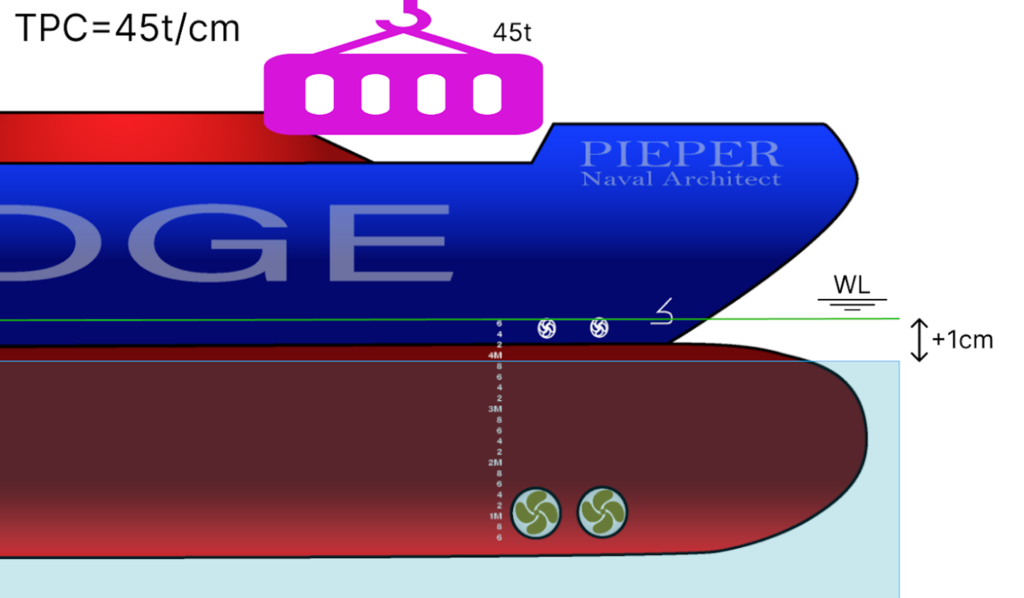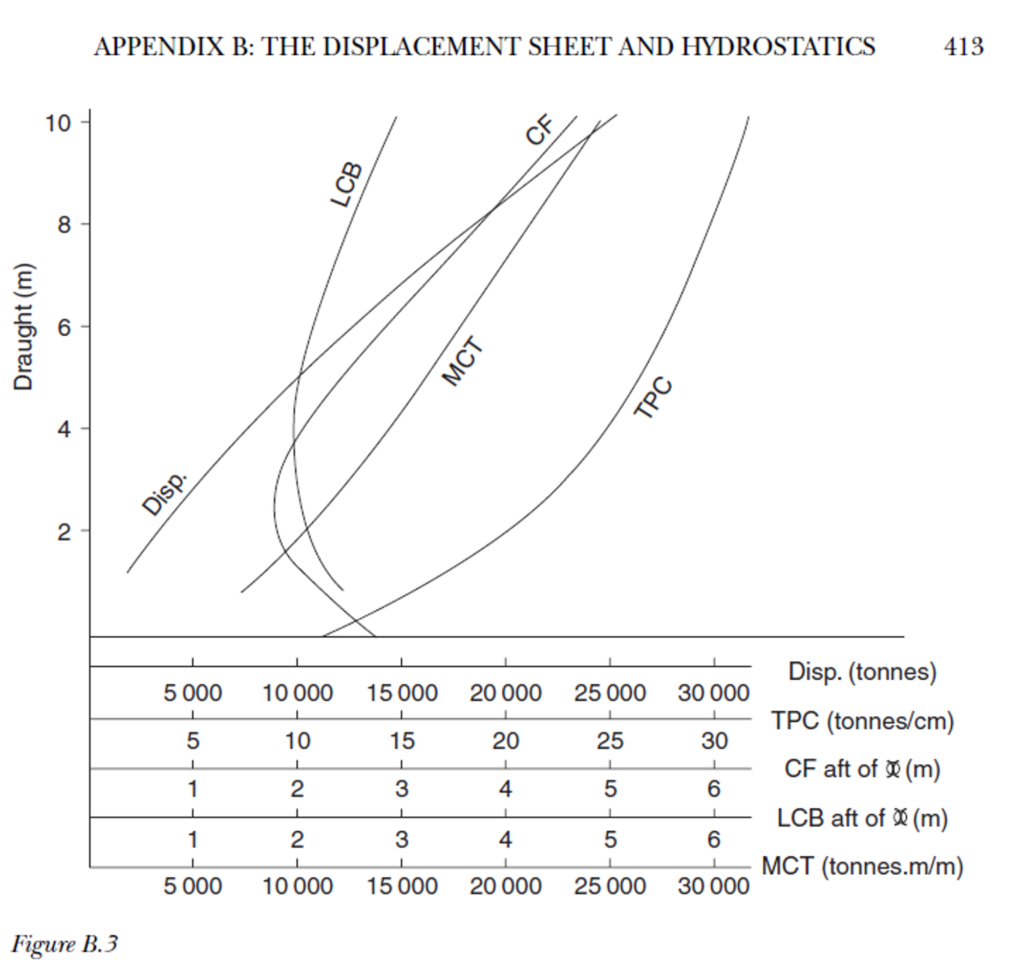How much weight will cause a ship to sink by 1 centimeter?
The importance of knowing ship’s details and accurate port conditions
TPC stands for “Tons per Centimeter” of immersion, which means it is the amount of cargo in tons needed to sink the ship by 1 cm.
This value is important in the design of a cargo ship, because for all those involved in a maritime transport operation, the more cargo, the better the cost-benefit.
To calculate the TPC (tons per centimeter of immersion), we first need to know the waterline area (Aw) of the ship. Aw is calculated by multiplying the length, breadth, and waterline coefficient (Cw) of the ship. Cw is a coefficient calculated during the ship’s design, influenced by the shape of the hull and hydrodynamics.
With the waterline area in hand, the TPC is then calculated by multiplying Aw by the density of water in t/m³ and dividing by 100 to get the result in centimeters.
That’s it, we now have the TPC to load the ship.
It is essential to note that this value can change depending on the ship’s draft, because the geometry of the waterline plan will change according to the hull shape at each draft.
Each centimeter of draft of a ship is important for transporting more cargo. Similarly, it is indispensable to have precise control of the depths of ports in order to optimize operations.

So, if a ship has a TPC of 45t/cm, that means that it will sink by 1 centimeter if you add 45 tons of cargo to it.
A simple example
When a ship with a box-shaped hull sinks, the TPC (tonnes per centimeter) remains constant.
This is because the water plane area does not change as the ship sinks. Therefore, the weight of cargo required to sink the ship by one unit of draft remains constant for all draft (H) values.

A more complex example
In prismatic-shaped ships, as a ship sinks, its TPC increases due to the increased water plane area.
The TPC is dependent on the draft of the ship (designated as H), meaning that as the ship sinks further, more cargo is required to sink each unit of the draft.


Example of hydrostatic information of a ship and how they change in function of Draft.
Source: Tupper.E – Introduction to Naval Architecture 4th Ed
